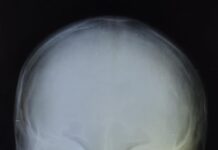Introduction:
Cervical ribs might sound like a complex medical term, but in simple language, they are an extra set of ribs that some people have in their neck area. This condition, although not widely known, can have various effects on a person’s health. Let’s delve into what cervical ribs are, why they occur, and what impact they can have on individuals.
What are Cervical Ribs?
Typically, humans have 12 pairs of ribs that protect our vital organs in the chest. However, some individuals may develop an additional pair of ribs in the neck region, above the first rib. These extra ribs are known as cervical ribs—an anatomical anomaly that occurs during fetal development.
Causes:
Cervical ribs arise due to a congenital malformation during the early stages of pregnancy. This means that a person is born with this extra set of ribs. While the exact cause isn’t always clear, it is believed to be linked to genetic factors or environmental influences during embryonic development.
Types of Cervical Ribs:
There are different types of cervical ribs, classified based on their size and shape. Some may be short and rudimentary, while others can be longer and extend down towards the first rib. The variation in size and shape can influence the potential impact on surrounding structures, such as blood vessels and nerves.
Potential Impacts:
Having cervical ribs doesn’t always lead to noticeable health issues, and many people may live their entire lives without realizing they have them. However, in some cases, these ribs can compress nearby blood vessels and nerves, leading to a condition known as thoracic outlet syndrome (TOS).
Thoracic Outlet Syndrome:
TOS occurs when the nerves or blood vessels between the neck and the armpit are compressed, causing pain, numbness, and tingling in the arms and hands. This compression can be exacerbated by the presence of cervical ribs. Individuals experiencing symptoms like persistent shoulder pain, weakness in the arms, or numbness should seek medical attention for a proper diagnosis.
Diagnosis and Treatment:
Cervical ribs are often discovered incidentally through imaging tests conducted for unrelated medical issues. If cervical ribs are causing symptoms, a vascular surgeon may recommend various treatment options, including physical therapy, pain management, or, in severe cases, surgical intervention to relieve pressure on affected structures.
Also Read: Guarding Against Pneumonia: Lifestyle Choices for Stronger Defences
Conclusion:
In conclusion, cervical ribs are an uncommon anatomical variation that, in many cases, may go unnoticed throughout a person’s life. However, when these extra ribs contribute to thoracic outlet syndrome, they can lead to discomfort and other symptoms. Understanding the causes, types, and potential impacts of cervical ribs is crucial for individuals who may be experiencing related symptoms and seeking appropriate medical care.
Dr. Krishna Chaitanya
Lead Consultant – Vascular and Endovascular Surgery
This year educate yourself and develop your career with EdTech Platform EasyShiksha

































































